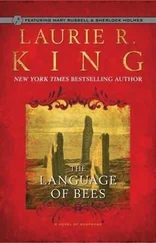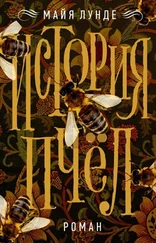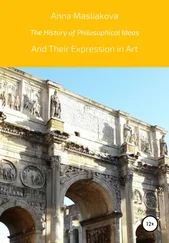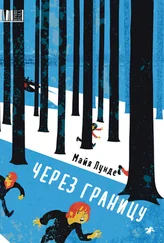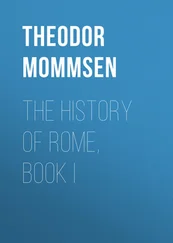But how to best demonstrate this? Choosing a topic became an immense task, one that had me going in circles. Just about any topic was of interest when viewed from the perspective of the natural sciences. The earth’s crops, the discovery of America, the seasons. So many options!
In the end it was Rahm who made the decision. He put his cool hand on top of my clammy one, and smiled at my confused enthusiasm. “Tell them about the microscope,” he said. “The possibilities it has given us. Most of them don’t even know what such a device is.”
It was a brilliant idea; I would never have come up with it myself, so of course that decided it.
The day arrived, with this dry wind and sun from a towering sky. We were uncertain about how many would come. Several of the older villagers pointed out that what we were doing was ungodly, that one didn’t need any books other than the Bible. But curiosity had apparently titillated the majority, because the assembly hall was soon so crowded that it heated up to a summer temperature, despite the chilly April weather outdoors. It was out of the ordinary that little Maryville hosted events such as this.
I would be presenting my work first; that was what Rahm wanted. Perhaps he wanted to show me off, as if I were his own newborn child, perhaps he was still proud of me at this time. After a few long minutes, my voice trembling in time with my knees, I found my confidence. I leaned on the words that were so thoroughly prepared, discovered that they carried, that they absolutely did not lose their credibility as they left the paper and were dispersed into the air between the audience and me, but instead made it all the way to their destination.
I began by quickly summarizing the history, spoke briefly of the condenser lens that came into use all the way back in the sixteenth century, about the compound optical microscope, described by Galileo Galilei in 1610. To demonstrate the microscope’s significance in practice I had decided to tell them about one specific individual. I had chosen the Dutch zoologist Jan Swammerdam. He had lived in the seventeenth century and was never properly recognized by his contemporaries, was poor and lonely, but for posterity he was a true monument in natural history, perhaps precisely because he made a connection between creation and creativity at such an early stage.
“Swammerdam,” I said and allowed my gaze to sweep across the assembly. “Never forget his name. His work has shown us that the different stages in the life of an insect, the egg, larvae and pupae, are in fact different forms of the same insect. Swammerdam developed a microscope which enabled him to study the insects in detail. During these studies he produced drawings unlike anything else we have seen.”
With a dramatic hand gesture, which was well rehearsed, I pulled down a chart I had hung up behind me.
“Here you can see Swammerdam’s illustration of the anatomy of the bee, as he has drawn it in his work Biblia Naturae .”
I allowed myself a dramatic pause, let my gaze come to rest on the assembly, while they took in the extraordinarily detailed drawings. At that exact moment the spring sun in its passage over the roof of the assembly hall hit the window on my left, a lone ray of sunshine fell through, spread out towards the rows of benches and fell upon the person sitting furthest to the left, beside two female friends: Thilda.
Afterwards I’ve understood that it hadn’t been as much a surprise for her as for me. I was of course on the minds of many young women; the young natural scientist, educated in the capital, dressed in modern garments, well spoken, a bit short, perhaps, not the most athletic—to tell the truth I had already begun struggling with weight gain, but what I lacked in physical attributes, I made up for intellectually. The eyeglasses on my nose alone were testimony of this. I usually wore them pushed down a bit, so I could gaze sagely over the frames. When I got them, I had spent an entire evening working out the perfect position for the glasses, finding the precise spot on my nose where they were securely in place and which simultaneously made it possible to look people right in the eye, without having to look through the small oval lenses, well aware as I was that the concave lenses made my eyes look smaller. I also knew that many women found my lush mane of hair attractive. I kept my hair at medium length, which showed it off to its best advantage. Perhaps Thilda had already observed me for a long time, assessing me, comparing me with other young men in the village. Perhaps she had seen the kind of respect I was treated with, deep bows and humble looks, wholly different from the other young men she had in her circle, who were probably always coarse in both their dress and conduct and were treated accordingly.
Thilda was wearing her Sunday best, something blue, a dress, or perhaps a blouse, that was nicely fitted across her bosom. On either side of her round face corkscrew curls descended towards her shoulders, the virtually uniformlike hairstyle she had in common with all of her female companions, and which was also to be seen on many married women—even though one might think they should be past the need for that kind of tomfoolery with their appearances. It was, however, neither the curls nor the clothing that made such an impression on me. What the lone ray of sunshine wormed its way forward to, through the heavy air of the assembly hall, was an unusually straight and well-proportioned nose, like an illustration in a textbook on anatomy. It was a classical nose; I immediately got the urge to draw it, study it, a nose with a shape corresponding exactly with its function. Or so I thought. The function of her nose was regrettably not in keeping with its form, as I would later find out, in that it was always red and runny from an eternal cold. But on this day it beamed in my direction, neither shiny nor red, just extremely interested in me and my words, and I was unable to take my eyes off of it.
The dramatic pause grew too long. The audience began to move restlessly, and I became aware of the sound of a long and affected clearing of the throat from Rahm, who was standing behind me. The chart still hung there, dangling and neglected.
I hastened to point at it. “Swammerdam spent five whole years studying the life found in a beehive. All of this was done through the microscope, which gave him the possibility to include every single tiny detail… so here… here you can see the queen bee’s ovaries. Through his studies Swammerdam determined that a single queen bee in fact lays the eggs for all three of the different types of bees—drones, worker bees and new queens.”
The members of the audience stared at me, some squirmed a little, nobody appeared to understand. “This was groundbreaking in its time, in that many until then had believed that it was a king bee, in other words, a male bee, that led the hive. But with genuine fascination, truly great enthusiasm, Swammerdam undertook studies of the male bee’s organs. And here you can see the results.” I pulled out another chart.
“This is the genitalia of the male bee.”
Blank faces out there.
The audience moved restlessly. Some directed their gazes towards their laps to study a loose thread in the fabric of their dresses carefully, while others showed a sudden interest in the irregular cloud formations in the sky outside.
It suddenly occurred to me that they probably didn’t know what either ovaries or genitalia were, and I felt a compelling urge to help them understand. Now came the part of the lecture that never became a part of the story that Thilda told our children, and neither had it ever once been mentioned between her and me. For years the thought of what happened afflicted me with a burning sense of shame.
Читать дальше

